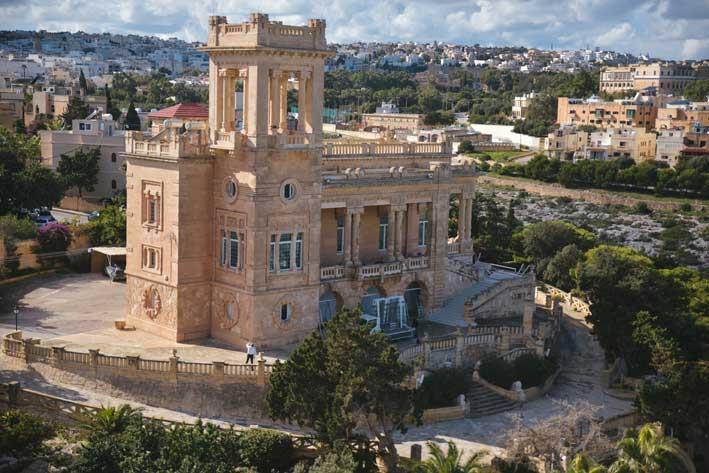The Environment and Planning Review Tribunal has drastically reduced the Planning Gain that the Villa Rosa developers must pay for their Paceville development by hundreds of thousands of euros, after an appeal on this point by the developer.
Originally, the developer had to pay a €623,325 planning gain, but this has been reduced to €116,187.
In February 2018, the Planning Authority Board had approved a major Villa Rosa - Cresta Quay area development, which will see the construction of parking facilities, hotels and ancillary facilities, commercial areas, multi-ownership holiday accommodation, bungalows and a Language school with accommodation.
The 48,723 sqm redevelopment project, which was filed by Garnet Investments Ltd back in 2012, will be built over different locations around St George's Bay, St Julian's, and includes the "demolition of all existing buildings forming part of St. George's Bay Hotel, Dolphin House, Moynihan House and Cresta Quay.
In their decision, the Planning Board had said that the permission was subject to a planning gain to the value of €623,325, towards PA’s Planning Fund. The funds raised from the planning gain were to be used to fund environmental improvement projects in the locality of the site The permission was also subject to an additional payment of €50,000 which was to be deposited in the Artistic Fund administered by Arts Council Malta. This however, was now changed by the Appeals tribunal.
The appellant said that the board is required to explain how it reached this payment imposition, and how it constitutes an appropriate decision. “More so in the context of other obligations on the site in relation to natural heritage and open space obligations.” He argued that the board went over and above the normal planning gain rate.
Among other things, he said that “It is clear that contrary to what is provided by the law, it set and created a general rule (referring to the planning gain rate) when the same board does not have the power to do this according to law, and the same board does not have the jurisdiction to set policy or general regulations like this.”
He argued that the rate imposed is excessive and creates an imbalanced situation, and said that the rate previously applied was far inferior to the jump in the rate imposed on cases decided since a few months ago, and said that it does not create equality between projects of the same type and importance.

The appellant asked the appeals tribunal to modify the decision by the PA Board, and while confirming the decision, cancel the condition that imposes the payment of a €623,325 planning gain and €50,000 for the Artistic Fund.
In its considerations, the Environment and Planning Review Tribunal said that the reasons for the appeal were that until the moment of the decision that the applicable rate be €25 per square metre, the applicable rate was always of €4.66 per square metre. It also noted that another reason for the appeal was that the change from €4.66 to €25 did not occur according to law, as in there wasn’t a decision by the Authority’ s Executive Council, but rather was a decision taken during the course of examination of a particular application.
The Planning Authority argued, the Appeals Tribunal noted, that the procedure used was correct, and quoted a legal article that gives the board the power to consider requiring the applicant to make payments that are more appropriate. The Authority, the tribunal noted, also did not agree that the rate change was done in the nature of policy, but was solely an imposition of a planning gain according to law, given that this was appropriate for the circumstances of the case.
The tribunal noted that the rate increase was of 400%, and that the reason given for this was that it was able to do this. “This however is not enough. For one to radically change the rate that is to be established requires an in-depth study that be applied not only in current applications but is applied to all applications. For one to depart from the normal rate.” The tribunal noted that changing the rate with a percentage here or there could make sense, but imposing such a massive rate difference does not, the tribunal said, adding that such an imposition becomes one not appropriate.
The tribunal noted that the continuous practice was the use of a €4.66 per square metre planning gain, and did not find planning grounds in this application for the rate to change. “It is more appropriate to use the €4.66 rate for every square metre.”
For this reason, the Environment and Planning Review Tribunal confirmed the €50,000 payment to the Artistic Fund, and reduced the €623,325 planning gain to €116,187, using the €4.66 per square metre rate.
Environmentalist and AD Leader Carmel Cacopardo described the decision by the Tribunal as one that creates inconsistence. Giving examples, he mentioned that the planning gain on the Malta International Airport Masterplan was €25 per square metre. In the Lowenbrau case, on appeal by the Qormi local council, it was decided that a €10 per square metre planning gain be imposed he said. “I cannot understand this decision as it creates inconsistencies.”